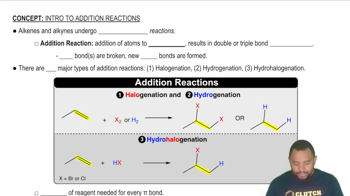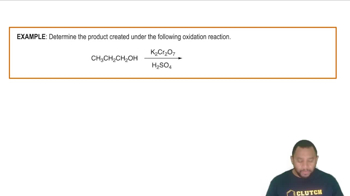Ocimene, a compound isolated from the herb basil, has three double bonds and the IUPAC name 3,7-dimethyl-1, 3-6-octatriene.
b. Draw the structure of the compound formed if enough HBr is added to react with all the double bonds in ocimene.
 Verified step by step guidance
Verified step by step guidance Verified video answer for a similar problem:
Verified video answer for a similar problem:



 1:13m
1:13mMaster Benzene Reactions Concept 1 with a bite sized video explanation from Jules
Start learning